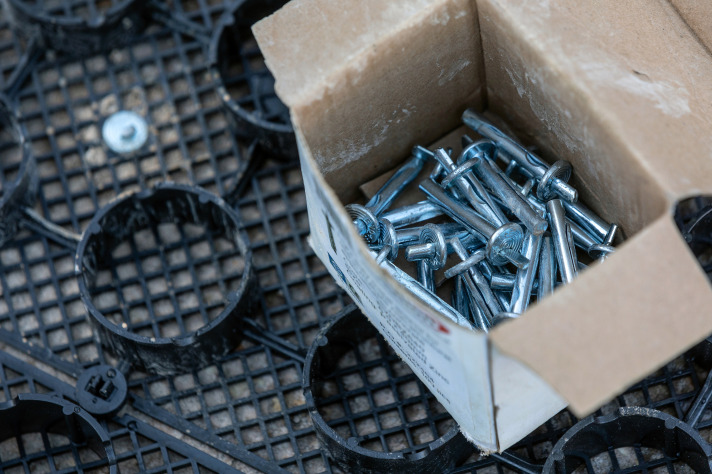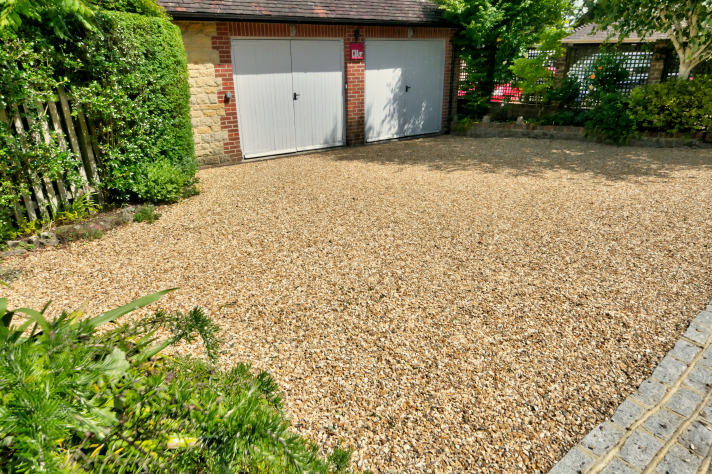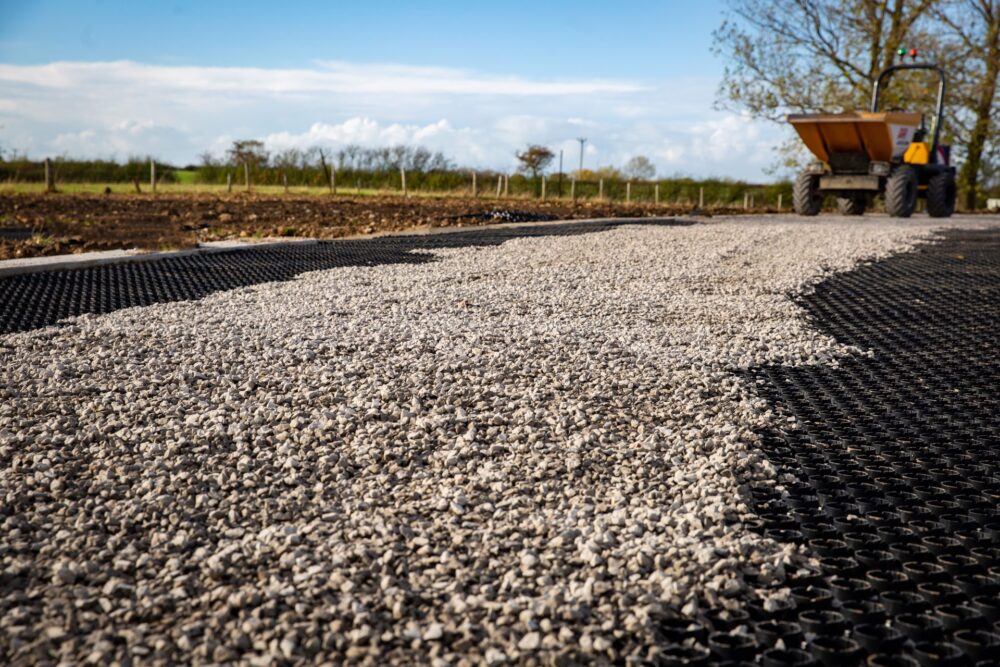Gravelrings overlay system is a cost-effective installation method for homeowners who need to replace their old concrete or tarmac driveway on a tight budget. In a Gravelrings driveway overlay system, grids are laid on existing surfaces to reduce the cost. Contractors save time as they do not need to excavate and factor in journeys to the tip to dispose of groundwork. From this, their clients save money on the costs associated with removing and disposing of excavated groundwork.
How to install a Gravelrings driveway overlay system
- Check the sub-base – If the sub-base is structurally sound then the surface is suitable for laying Gravelrings overlay system. However, contractors should check the surface for loose material and potholes. Any potholes need filling to ensure the driveway overlay system is laid evenly.
- Install Graveledge edging – For driveways with no solid structure adjacent, lay Graveledge around the perimeter to prevent gravel from migrating around the edge.
- Lay the foundations – To install the gravel grids place them mesh side down on the driveway and clip them together. A gap of at least 50mm has to be left around the perimeter to allow the panels to expand in the warmer months.
- Fire or drill nails into place – One method is to fire concrete fixing nails through the predrilled holes using an electric nail gun. Alternatively, drill pilot holes and hammer Gravelrings fixing pins into place. Either method is secure, this is down to contractor preference. Our experts recommend one fixing per square meter for both methods. Additionally, slopes and turning areas need fixings as these areas require extra security.
- The finishing touch to a gravel overlay system – Spread gravel over the overlay system to complete the gravel driveway. The depth will need to be approximately 10-15mm above the top edge to hide the grids. A top tip from our experts is to rinse the gravel with water and lightly compact the stone. This helps with consolidation and settlement.

Why use Gravelrings for the overlay system?
Moreover, 52% of contractors surveyed purchased Gravelrings for their simple usability. Gravelrings gravel mats are fast and efficient to lay. They come supplied to the site in 1sqm tiles to save time on clipping them together.
However, Beauxfort understands contractors need more than a fast installation. They need quality they can depend on to ensure the surface lasts a lifetime. After all, with every client reputation and recommendations are at stake. Gravelrings are trusted by professionals for their hidden stability. They create a solid base to eliminate gravel displacement and support movement from vehicles. Without the gravel mats showing through the surface. While Gravelrings is a worthwhile investment into a property, contractors and their clients enjoy the cost savings. With inflation continuing to bite, clients are searching for long-lasting driveway solutions at a fair price.
Gravelrings save installers money on gravel demand. Contractors need to purchase less gravel than they would for alternative grids as Gravelrings are 25mm deep. Additionally, homeowners will buy less gravel over the lifetime of the surface. Gravel locks into place in the circular cells to stop stone migration and needs little maintenance. Without Gravelrings patches and ruts will form which need regular raking and refilling – expensive and time-consuming.
Gravelrings overlay system reduce project and maintenance costs for the homeowner. With 100% of contractors rating Gravelrings quality as excellent or very good, landscaping professionals know the surface they lay will last a lifetime.

To discuss a specific project using Gravelrings driveway overlay system with a technical expert ring 0330 055 2599 or email info@beauxfort.com. Alternatively, order a free sample to feel the quality of Gravelrings.



